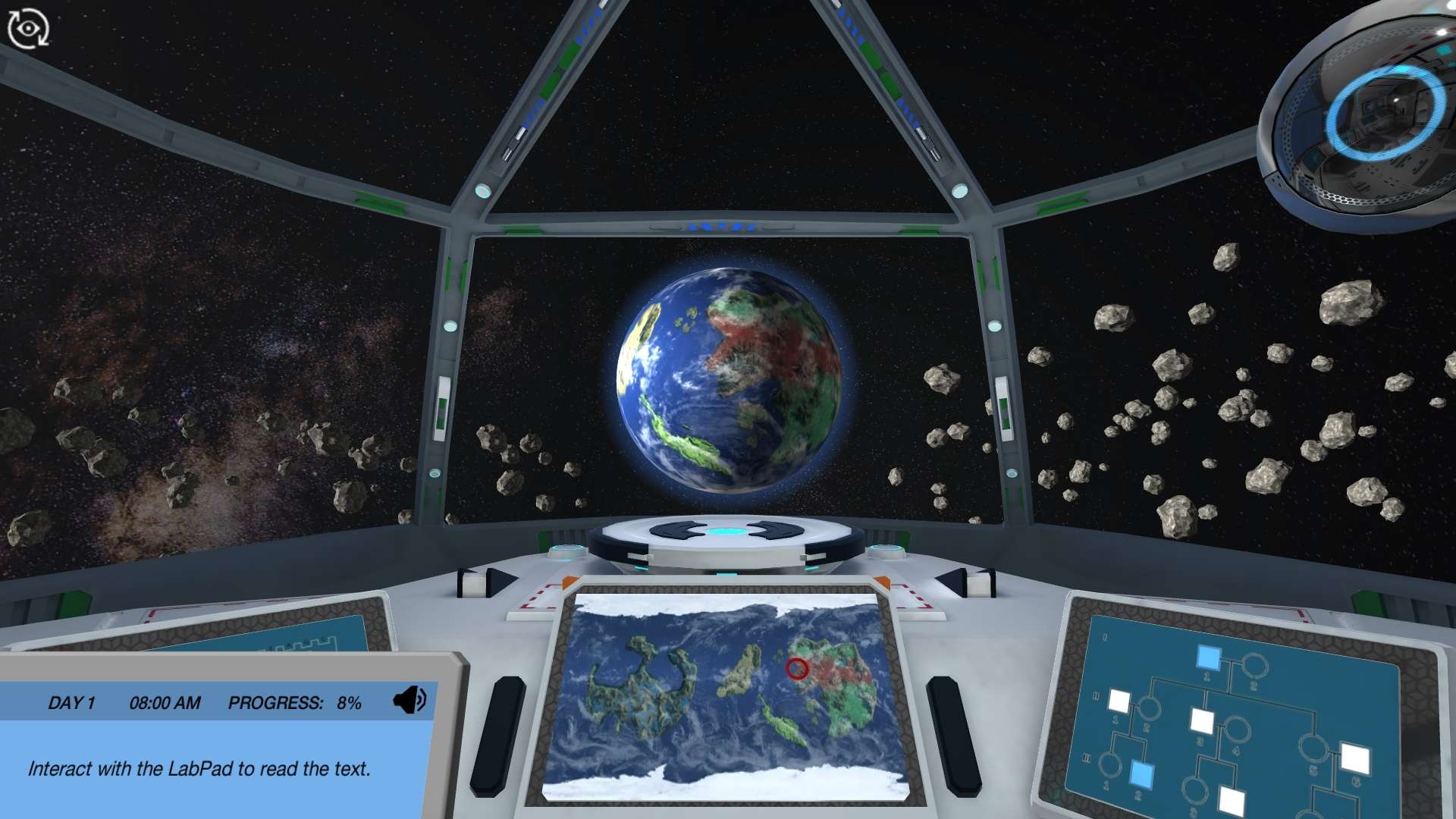Heading 1
Heading 2
Heading 3
Heading 4
Heading 5
Heading 6
Lorem ipsum dolor sit amet, consectetur adipiscing elit, sed do eiusmod tempor incididunt ut labore et dolore magna aliqua. Ut enim ad minim veniam, quis nostrud exercitation ullamco laboris nisi ut aliquip ex ea commodo consequat. Duis aute irure dolor in reprehenderit in voluptate velit esse cillum dolore eu fugiat nulla pariatur.
Block quote
Ordered list
- Item 1
- Item 2
- Item 3
Unordered list
- Item A
- Item B
- Item C
Bold text
Emphasis
Superscript
Subscript
About This Simulation
Help the scientists on the exoplanet Astakos IV to choose the location of the new research center by finding out where it will have the least impact on the ecological diversity of the area.
Learning Objectives
- Map the distribution of species over a region and identify hotspots for biodiversity.
- Relate patterns of biodiversity to abiotic or anthropogenic conditions.
- Describe and explain gradients in abiotic factors in an area.
About This Simulation
Lab Techniques
- Shannon diversity index
- Map layers analysis
Related Standards
- HS-ESS3-2, HS-ESS3-3, HS-ESS3-4, HS-LS2-1, HS-LS2-2, HS-LS2-7
- Unit 8: Ecology
- Potentially too high level, but could support:
- Biology C.1 Species and communities
Learn More About This Simulation
What is spatial ecology? Find out in this simulation, where you will help the residents on the exoplanet Astakos IV choose the location for the new research center, while learning how environmental factors can influence the distribution of species.
Build a new research center
Scientists on Astakos IV need to build a new marine research center to be able to continue their research on the planet. They have chosen you as an ecologist to decide where it should be placed. Your task is to decide on a location with minimum impact on the local species.
Analyze the species’ distribution
You will collect field data from the species and environmental variables and transfer them to the Labster holo-table. On the holo-table you will be able to analyze all the information you have gathered by using map layers analysis on a 3D holographic model of the terrain you are investigating. You will also analyze the distribution of different variables, and even be able to track the location of many different species in the area!
Learn by doing
You will learn what the most important aspects to take into account are in order to minimize the impact of such a project in a natural environment. With this knowledge you will be able to decide what the optimum location should be.
Will you be able to help the scientists on Astakos IV build their new research center?
For Science Programs Providing a Learning Advantage
Boost STEM Pass Rates
Boost Learning with Fun
75% of students show high engagement and improved grades with Labster
Discover Simulations That Match Your Syllabus
Easily bolster your learning objectives with relevant, interactive content
Place Students in the Shoes of Real Scientists
Practice a lab procedure or visualize theory through narrative-driven scenarios


FAQs
Find answers to frequently asked questions.
Heading 1
Heading 2
Heading 3
Heading 4
Heading 5
Heading 6
Lorem ipsum dolor sit amet, consectetur adipiscing elit, sed do eiusmod tempor incididunt ut labore et dolore magna aliqua. Ut enim ad minim veniam, quis nostrud exercitation ullamco laboris nisi ut aliquip ex ea commodo consequat. Duis aute irure dolor in reprehenderit in voluptate velit esse cillum dolore eu fugiat nulla pariatur.
Block quote
Ordered list
- Item 1
- Item 2
- Item 3
Unordered list
- Item A
- Item B
- Item C
Bold text
Emphasis
Superscript
Subscript
A Labster virtual lab is an interactive, multimedia assignment that students access right from their computers. Many Labster virtual labs prepare students for success in college by introducing foundational knowledge using multimedia visualizations that make it easier to understand complex concepts. Other Labster virtual labs prepare learners for careers in STEM labs by giving them realistic practice on lab techniques and procedures.
Labster’s virtual lab simulations are created by scientists and designed to maximize engagement and interactivity. Unlike watching a video or reading a textbook, Labster virtual labs are interactive. To make progress, students must think critically and solve a real-world problem. We believe that learning by doing makes STEM stick.
Yes, Labster is compatible with all major LMS (Learning Management Systems) including Blackboard, Canvas, D2L, Moodle, and many others. Students can access Labster like any other assignment. If your institution does not choose an LMS integration, students will log into Labster’s Course Manager once they have an account created. Your institution will decide which is the best access method.
Labster is available for purchase by instructors, faculty, and administrators at education institutions. Purchasing our starter package, Labster Explorer, can be done using a credit card if you are located in the USA, Canada, or Mexico. If you are outside of North America or are choosing a higher plan, please speak with a Labster sales representative. Compare plans.
Labster supports a wide range of STEM courses at the high school, college, and university level across fields in biology, chemistry, physics, and health sciences. You can identify topics for your courses by searching our Content Catalog.















